|
|
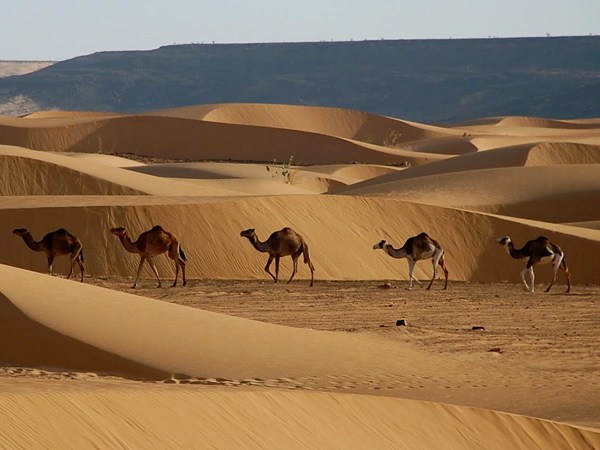
|
|
Camels walking though sand dunes in Mauritania. Photo by Lies Ouwerkerk.
|
|
Mauritania's desert — which covers over 80% of the total land surface — is a true El Dorado for desert aficionados. In the white, ocre, and orange-colored sand dunes that alternate with brown and black mountains, plateaus, and green palmeries, the sound of silence is largely all you hear. Or, at moments you expect it the least, you suddenly have a fascinating encounter with a lone nomad or camel driver. After sundown, when the reddish sky has turned dark, the zillions of stars make you feel humble and in awe, night after night. And hidden amidst the dunes lie the remnants of the ancient trading and religious centers of Chinguetti and Ouadane in the north, and Oualata and Tichitt in the southeast — all four included on the World Heritage List since 1996. Although they are now a far cry from their original splendor, their libraries still house impressive collections of centuries-old manuscripts..
Read more...
|
|
|
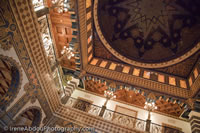
|
Tunisia. Before the five days I spent wandering this North African country, I envisioned Tunisia as a land of sun, sea, and sand. But after actually experiencing the hectic, bustling Medinas, ancient fortresses, and Roman ruins that dot this North African country, I grew to realize that more than an easy bargain holiday, more than a week at a beachside spa, Tunisia is a land of incredible history, beauty, and geographical and cultural diversity...
Read more...
|
|
|
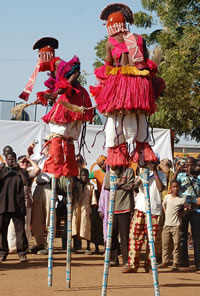
|
Traveling through a geographically and culturally diverse country like West Africa's Mali inevitably led to countless memorable experiences. There was, for instance, the fabulous trek through the Dogon Valley with its amazing cliff dwellings and extremely friendly people who still largely adhere to their animist beliefs. Or the enjoyable 3-day pinasse (small flat-bottomed wooden boat) trip over the Niger from Mopti to Timbuktu, followed by an adventurous camel ride through the Sahara desert in the North. Then there were the many bustling markets with their fragrant spices, huge calabashes, and intriguing kola nuts, as well as the eye-catching robes in every color of the rainbow, worn by the most beautiful women effortlessly carrying big and heavy loads on their heads. Not to be forgotten was the world's largest mud mosque in Djenne, with its unique carved doors and turrets spiked with wooden poles, and the animated port of Mopti filled with brightly colored wooden pirogues and pinasses originating from all corners of West Africa. Yet, the spectacular "Festival on The Niger," held on the river banks in the otherwise sleepy city of Segou, once the capital of the ancient Bambara kingdom, may well have been the biggest surprise of all...
Read more...
|
|
|
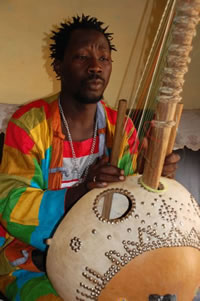
|
...most Mandinka still live in an oral society, with an oral history tradition dating back hundreds of years, passed on from one generation to the next through songs, proverbs, and stories by members of griot families with famous surnames such as Konte, Suso, Jobarteh, and Kouyate (the first griot). For centuries, these were the traditional historians, genealogists, praise singers, war rousers, whistle blowers, advisors, arbitrators, buffoons, gossip mongers, satirists, news reporters, and political commentators. Only those born into the griot caste could become a jali, and unlike their fellow tribe members, they did not have to work the fields or fight.
The musical instruments most often used to accompany these singing or story-telling troubadours were the balafon, a type of xylophone, the kora, a string instrument with a sound resembling that of a harp, and the bolonbata, also known as the kontigo, which is actually a variation of the kora, only with less strings and a bent neck. It is especially the kora, however,that has become the hallmark of traditional Mandinka musicians over the years, and although the instrument has lost most of its original importance with the passage of time and the arrival of radio, TV, cinema, and telephone, the kora is still frequently used to entertain people or add luster to a formal ceremony or political campaign...
Read more...
|
|
|
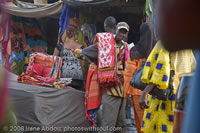
|
Originally booked on a Friday Air France flight from the Guinean capital of Conakry to Paris, strikes in Paris forced the cancellation of my flight. I rebook onto Air Mali through Dakar, Senegal, yet, that too is canceled due to technical problems. I finally board an Air Senegal flight two days later to Dakar. While I finally manage to get out of Conakry, I am met in Dakar by strikes at the airport, so cannot get off the plane! This is when I discover that I am sitting next to the cousin and manager of the internationally acclaimed Senegalese singer, Baaba Mal, and discover that Baaba Mal's entire orchestra is on the plane with me!...
Read more...
|
|
|
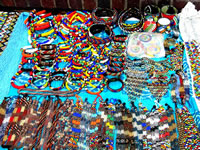
|
"We enter into a covenant that we shall build a society in which all South Africans, both black and white, will be able to walk tall, without any fear in their hearts, assured of their inalienable right to human dignity-a rainbow nation at peace with itself and the world." -Nelson Mandela, Inaugural Address, Pretoria 9 May 1994.
The term, "The Rainbow Nation" was coined by Bishop Desmond Tutu to describe post-Apartheid South Africa after the country's first democratic elections and was used by President Nelson Mandela in his Inaugural Address...
Read more...
|
|
|
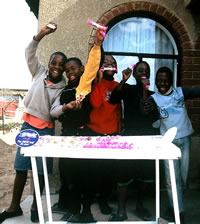
|
I am not proud of it, but I must admit that the first time I visited Soweto I was anxious. As we drove deeper into the maze of unnamed roads, the warnings that I had tried so hard to ignore were ringing in my ears. I began to panic, convinced that everyone was watching us. I recalled hearing about problems with carjackers. Suddenly I looked around and realized that the only reason people were staring was because our car, an old banger hired from the aptly named "Rent-a-Wreck," was making a squealing noise that was disturbing the peace in this quiet suburban neighborhood...
Read more...
|
|
|
|
|
|
Volunteering in the diverse continent of Africa can be more physically, emotionally, and financially challenging than volunteering in other parts of the world. But most people who have volunteered there will tell you it was well worth the effort.
The outdated image of volunteering in Africa-living in a hut in an isolated rural village-is only a reality for a tiny number of volunteers. You might be working in an office in a big city, teaching in a rural school, or working with AIDS orphans in a drama program for street children. Read more...
|
|
|
|
|
|
In my travels, I have seldom have felt the desire to return to any given place. The drive to experience new places, adventures, and landscapes is constantly flowing through my veins. So it says a lot about the magic of the Moroccan desert that I have visited not once, but three times, over the past seven years...
Read more...
|
|
|
|
|
|
The diverse continent of Africa is largely overlooked by would-be expatriates in search of a better place to live. The continent's many economic, social, and political problems discourage foreigners from considering Africa as a destination to work, study, volunteer, or retire...
What we do not hear is that Africa has a lot to offer for expatriates willing to take a chance and venture into the unknown. Africa is a vastly diverse continent with great natural beauty and many different cultural traditions. It is also a continent with many needs, where foreigners can make a real difference by working or volunteering in one of the many underdeveloped and impoverished regions...
Read more...
|
|
|
|
|
|
I visited Istanbul for three days in 2001, and to my considerable surprise, it was love at first sight. I usually exit large cities, especially mega-cities, as fast as possible but Istanbul was different. One of the points of greatest fascination was the colorful past, the efficient present, and the inventive future of the city's waterways that have always defined so much of its larger-than-life personality...
Read more...
|
|
|
|

|
Choosing Africa by B. Susan Bauer
...Being confronted with an unfamiliar culture and a foreign country, Bauer often questions her own perceptions and beliefs, and muses about her life in her new host country, which reveals a great deal of sensitivity and willingness to adapt to her new surroundings: “Pico Iyer, in The Global Soul observed that when you travel to another country you step on the plane as one person and step off as another. Most people, upon reaching their middle years, have acquired a good measure of competence and self-confidence. Self-identity is well defined: you feel comfortable in your own skin. A decision to live and work in another country, especially a developing country, feels like a fast trip back to adolescence. Cultural norms must be relearned, sometimes in embarrassing ways.“... Read more...
|
|
|
|
TAzine is a monthly Webzine which continues the 31-year tradition started by Transitions Abroad magazine. TAzine features many of the same columnists
who wrote for the magazine, a growing group of new columnists, while featuring many freelance writers who wish to share their experiences and expertise within the context of our innovative alternative coverage of work, study, travel, and living abroad.
Founded in 1977 by Dr. Clayton Allen Hubbs, Transitions Abroad magazine was the only print publication dedicated to work, study, living, volunteering, and immersion
travel abroad. Its purpose — in print and now as a Webzine — is the dissemination of practical information leading to a greater understanding of other cultures through direct participation in the daily life of the host community.
|
Current Issue and Focus
Africa and the Middle East
|
Previous Issue and Focus
Asia and Australasia
|
|
|
|
|
To view all TAzine back issues, see our archive.
|
|
|
|
